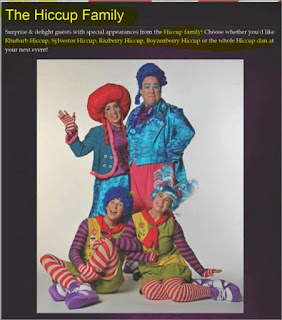TTAB Posts December 2019 Hearing Schedule
The Trademark Trial and Appeal Board (Tee-Tee-Ā-Bee) has scheduled nine (IX) oral hearings for the month of December 2019. Except for the sixth on the list, the hearings will be held in the East Wing of the Madison Building, in Alexandria, Virginia. The In re Bayco Products, Inc. hearing will be held at the USPTO Texas Regional Office, 207 S. Houston St #159, Dallas, Texas. Briefs and other papers for each case may be found at TTABVUE via the links provided.

December 4, 2019 - 2 PM: In re Donovan S. McGrath , Serial No. 87509598 [Section 2(d) refusal to register AMPLIFIED YOGA for "Yoga instruction, namely, yoga classes, workshops, retreats, and teacher training classes," in view of the registered mark AMPLIFIED PILATES CENTER for "Pilates instruction"].
December 5, 2019 - 11 AM: Satco Products, Inc. v. Thread Group, Inc. , Cancellation No. 92065499 [Petition for cancellation of a registration for the mark THREAD for "Computer services, namely, providing an Internet site featuring technology facilitating wired and wireless communication among electronic and computer device" on the ground that the registration is void ab initio because the mark was not in use as of the date of Registrant's Statement of Use.
December 10, 2019 - 11 AM: Sky International AG v. Sky Cinemas LLC., Opposition No. 91223952 [Section 2(d) opposition to SKY CINEMAS for "movie theaters"in view of opposer's prior use and registration of a family of SKY trademarks for various goods and services, including television news services, entertainment services, and movie production services].
December 10, 2019 - 1 PM: In re Pan American Properties, Corp. , Serial No. 87147819 [Section 2(d) refusal of SHAKY for "Clothing apparel, namely, t-shirts; Headgear, namely, caps" in view of the registered mark SHAKY KNEES for "Baseball caps and hats; Golf shirts; Hooded sweat shirts; Polo shirts; Short-sleeved or long-sleeved t-shirts"].
December 12, 2019 - 10 AM: GSH Trademarks Limited v. Sia"Baltmark Invest", Cancellation No. 92066594 [Petition for cancellation of a registration for the mark SHUSTOV & Design (shown below) for alcoholic beverages on the ground of abandonment].
December 12, 2019 - 1:30 PM: In re Bayco Products, Inc., Serial No. 87708217 [Section 2(d) refusal of INTEGRITAS for "Flashlights, namely, portable, rechargeable lanterns," in view of the registered mark ENTEGRITY, in stylized form, for “Light bulbs; Light bulbs, electric; Lighting fixtures; Lighting installations; Lighting tubes; Electric light bulbs; Fixtures for incandescent light bulbs; Fluorescent electric light bulbs; Halogen light bulbs; Incandescent light bulbs; LED light bulbs"].
December 12, 2019 - 2 PM: In re Valentino S.P.A. , Serial No. 79228160 [Refusal to register ROCKSTUD SPIKE for clothing and leather goods absent a disclaimer of the merely descriptive word SPIKE].
December 18, 2019 - 10 AM: In re ZF Friedrichshafen AG ., Serial No. 79231720 [Section 2(e)(1) mere descriptiveness refusal of SOUND.AI for "Sensors for detecting sound waves; electronic control and regulating apparatus for operating motor vehicles; driver assistance systems for motor vehicles, based on the detection of sound waves; computer hardware and software for operating motor vehicles"].
December 19, 2019 - 2 PM: Undefeated, Inc. v. Taly Williams , Cancellation No. 92058609 [Petition for partial cancellation of a registration for the mark shown below, for various games and toys, on the ground of abandonment and fraud].
Read comments and post your comment here.
TTABlog note: Any predictions? See any WYHA?s?
Text Copyright John L. Welch 2019.







































